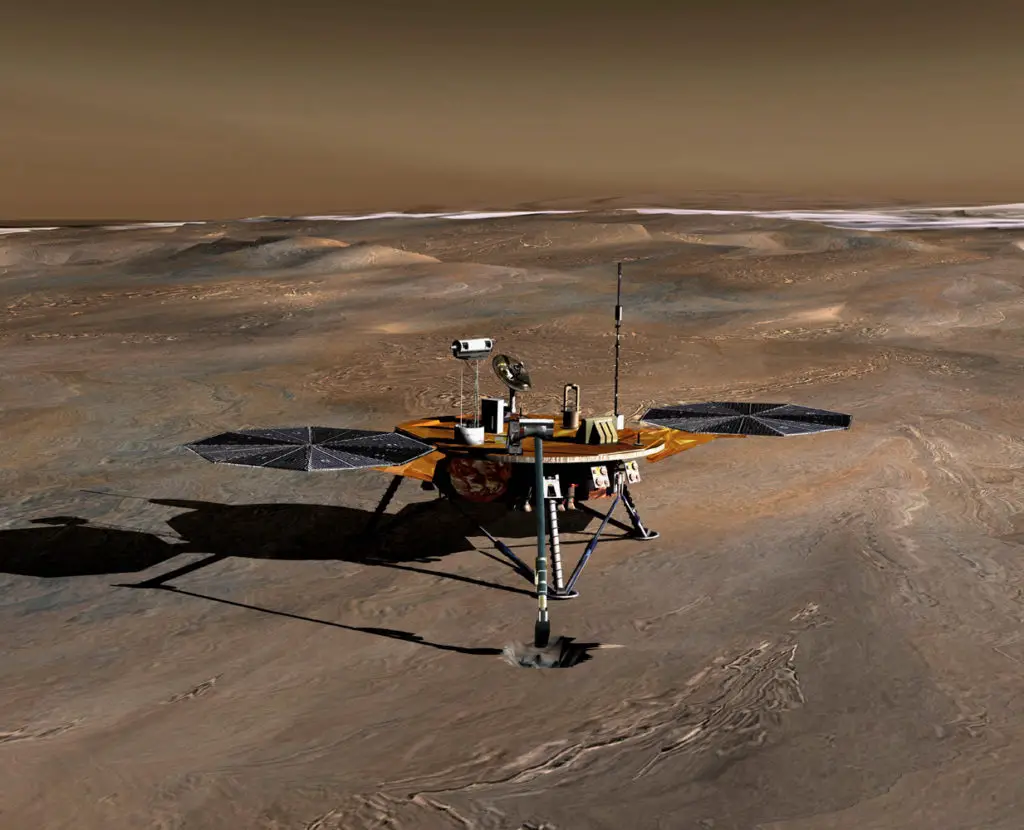Phoenix Mars Lander
After years of planning and past failed attempts, NASA spacecraft Phoenix Mars Lander finally descended on Mars on May 25, 2008 after completing a 422 million-mile journey. It took off on August 4, 2007.

Phoenix Mars Lander
The lander finished its Mars mission in August 2008. Its last communication with earth was on November 2. As winter set on Mars, the solar power dropped and the craft stopped responding.
The probe
The spacecraft spent about three months scooping up soil and ice samples for analysis. The probe’s robotic arm was about 7.5 feet long. It was equipped with a drill and other instruments to bore down into the ground for samples. The work was done within the body of the Lander. Phoenix’s lab had eight ovens to bake samples so that a gas sniffer could detect vaporized gases.
The mission
The Phoenix Mars Lander was not on a mission to look for life on Mars. Instead, it looked for traces of organic compounds in the samples which would be an indicator of conditions favourable for life. Nasa aimed for the planet’s high northern latitudes where ice is present just beneath the surface because the agency believed that if organic compounds were present on Mars, they were more likely to be preserved in ice.
The risk factor
Mars landings are always risky. Only five of the 15 US, Russian and European attempts to the planet had been successful before the landing of Phoenix Mars Lander. Prior to this $420 million mission Nasa had sent a spacecraft to Mar’s south pole. It went silent immediately upon arrival in 1999.